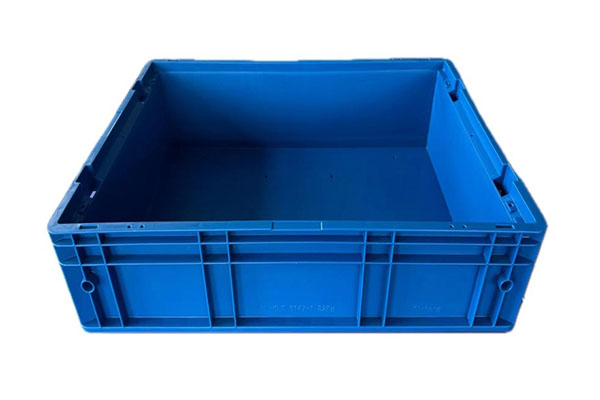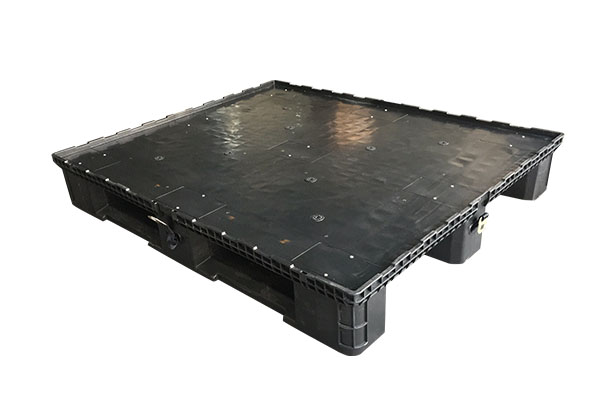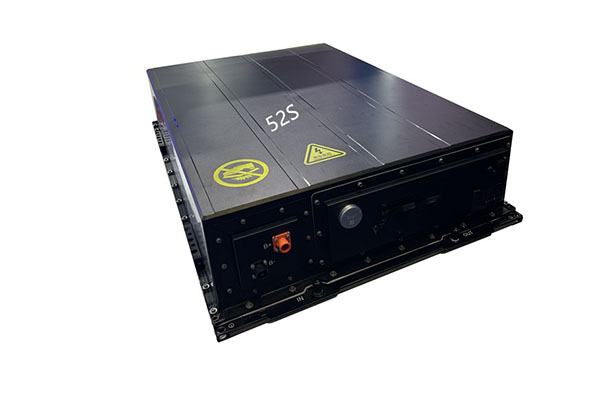How does the lightweight design of plastic box help its transportation and logistics?
Release Time : 2025-07-24
In the modern packaging industry, plastic box is one of the widely used packaging materials, and its design and application are constantly evolving to adapt to market demand and technological progress. Among them, lightweight design has become one of the important directions to improve the performance of plastic box. By reducing the weight of the plastic box itself, it can not only reduce production costs, but also significantly optimize the efficiency of transportation and logistics links, bringing many benefits to the entire supply chain.
First of all, the lightweight design of plastic box directly reduces the weight of a single product. This means that under the same load, the transportation vehicle can carry more products. Whether it is a truck, train or airplane, lightweight design can effectively increase the amount of goods transported each time, thereby improving transportation efficiency. In addition, lighter packaging materials also reduce the total load of the vehicle, reduce fuel consumption, and thus reduce carbon emissions. This green benefit not only conforms to the current environmental protection trend, but also establishes a good social image for the company.
Secondly, the lightweight design makes plastic box easier to handle and operate. In the process of warehouse management and logistics distribution, workers need to frequently move, stack and split packaging boxes. If the packaging material is too heavy, it not only increases the labor intensity of the workers, but may also cause safety problems. On the contrary, with a lightweight plastic box, workers can operate more easily and reduce the risk of personal injury caused by overwork. At the same time, lightweight materials also improve work efficiency, because employees can handle more goods per unit time, improving overall productivity.
Furthermore, lightweight plastic boxes help optimize the use of storage space. Due to the reduced weight, plastic boxes can often achieve higher stacking stability through improved structural design. This means that in a limited warehouse space, more layers of goods can be stacked without worrying about the risk of collapse or damage. In addition, some lightweight designs also take into account modularization and standardization, so that plastic boxes of different sizes and shapes can be nested or compactly arranged, further saving storage space. This efficient warehouse management method not only reduces rental costs, but also improves inventory turnover.
It is worth noting that the design of lightweight plastic boxes does not mean sacrificing protective functions. In fact, advances in modern material science allow manufacturers to reduce weight while maintaining or even enhancing the protective capabilities of packaging. For example, the use of high-strength polymers or the addition of reinforcing agents can improve the impact resistance and pressure resistance of plastic boxes without increasing thickness. In this way, even in long-distance transportation or complex loading and unloading processes, the internal products can be kept intact. This design concept that combines lightness and sturdiness not only meets logistics needs but also ensures product quality.
In addition, lightweight design also has a positive impact on logistics information management. With the development of Internet of Things technology, more and more companies are beginning to use smart labels and tracking systems to monitor the status of goods. For lightweight plastic boxes, their surface materials are more suitable for attaching electronic tags or QR codes, which facilitates information collection and transmission. This not only improves the transparency and traceability of the logistics process, but also provides convenient conditions for collaborative operations between various links in the supply chain. Whether it is a supplier, manufacturer or retailer, they can grasp the dynamics of the goods in real time and make adjustments and decisions in time.
It is worth mentioning that lightweight plastic boxes show greater advantages in international trade. In the context of globalization, cross-border transportation has become the norm, and lightweight design has undoubtedly brought competitive advantages to enterprises. On the one hand, it reduces the cost of international freight, especially for high-value goods that rely on air transportation, reducing the weight of packaging can directly save freight expenses; on the other hand, lightweight design helps to simplify customs inspection procedures, because lighter packaging is usually easier to identify and handle, reducing customs clearance time and speeding up the delivery of goods.
Finally, lightweight plastic box also promotes the development of circular economy. When packaging materials become lighter, the recycling process becomes more convenient and efficient. Lightweight plastic box occupies less recycled resources and is easy to sort and process. This is not only conducive to promoting the recycling of plastic waste, but also opens up new business models for related companies. For example, some companies have begun to explore the recycling of recycled plastics into new lightweight packaging materials, realizing closed-loop management from production to recycling and then to reproduction, and truly achieving sustainable development.
In summary, the lightweight design of plastic box has a profound impact on its transportation and logistics links. It not only improves transportation efficiency and reduces operating costs, but also brings significant benefits in environmental protection, employee health and supply chain management. With the continuous innovation of technology and the increasingly stringent environmental protection requirements of the market, lightweight plastic box will demonstrate its unique value in more fields in the future and continue to lead the green development trend of the packaging industry.
First of all, the lightweight design of plastic box directly reduces the weight of a single product. This means that under the same load, the transportation vehicle can carry more products. Whether it is a truck, train or airplane, lightweight design can effectively increase the amount of goods transported each time, thereby improving transportation efficiency. In addition, lighter packaging materials also reduce the total load of the vehicle, reduce fuel consumption, and thus reduce carbon emissions. This green benefit not only conforms to the current environmental protection trend, but also establishes a good social image for the company.
Secondly, the lightweight design makes plastic box easier to handle and operate. In the process of warehouse management and logistics distribution, workers need to frequently move, stack and split packaging boxes. If the packaging material is too heavy, it not only increases the labor intensity of the workers, but may also cause safety problems. On the contrary, with a lightweight plastic box, workers can operate more easily and reduce the risk of personal injury caused by overwork. At the same time, lightweight materials also improve work efficiency, because employees can handle more goods per unit time, improving overall productivity.
Furthermore, lightweight plastic boxes help optimize the use of storage space. Due to the reduced weight, plastic boxes can often achieve higher stacking stability through improved structural design. This means that in a limited warehouse space, more layers of goods can be stacked without worrying about the risk of collapse or damage. In addition, some lightweight designs also take into account modularization and standardization, so that plastic boxes of different sizes and shapes can be nested or compactly arranged, further saving storage space. This efficient warehouse management method not only reduces rental costs, but also improves inventory turnover.
It is worth noting that the design of lightweight plastic boxes does not mean sacrificing protective functions. In fact, advances in modern material science allow manufacturers to reduce weight while maintaining or even enhancing the protective capabilities of packaging. For example, the use of high-strength polymers or the addition of reinforcing agents can improve the impact resistance and pressure resistance of plastic boxes without increasing thickness. In this way, even in long-distance transportation or complex loading and unloading processes, the internal products can be kept intact. This design concept that combines lightness and sturdiness not only meets logistics needs but also ensures product quality.
In addition, lightweight design also has a positive impact on logistics information management. With the development of Internet of Things technology, more and more companies are beginning to use smart labels and tracking systems to monitor the status of goods. For lightweight plastic boxes, their surface materials are more suitable for attaching electronic tags or QR codes, which facilitates information collection and transmission. This not only improves the transparency and traceability of the logistics process, but also provides convenient conditions for collaborative operations between various links in the supply chain. Whether it is a supplier, manufacturer or retailer, they can grasp the dynamics of the goods in real time and make adjustments and decisions in time.
It is worth mentioning that lightweight plastic boxes show greater advantages in international trade. In the context of globalization, cross-border transportation has become the norm, and lightweight design has undoubtedly brought competitive advantages to enterprises. On the one hand, it reduces the cost of international freight, especially for high-value goods that rely on air transportation, reducing the weight of packaging can directly save freight expenses; on the other hand, lightweight design helps to simplify customs inspection procedures, because lighter packaging is usually easier to identify and handle, reducing customs clearance time and speeding up the delivery of goods.
Finally, lightweight plastic box also promotes the development of circular economy. When packaging materials become lighter, the recycling process becomes more convenient and efficient. Lightweight plastic box occupies less recycled resources and is easy to sort and process. This is not only conducive to promoting the recycling of plastic waste, but also opens up new business models for related companies. For example, some companies have begun to explore the recycling of recycled plastics into new lightweight packaging materials, realizing closed-loop management from production to recycling and then to reproduction, and truly achieving sustainable development.
In summary, the lightweight design of plastic box has a profound impact on its transportation and logistics links. It not only improves transportation efficiency and reduces operating costs, but also brings significant benefits in environmental protection, employee health and supply chain management. With the continuous innovation of technology and the increasingly stringent environmental protection requirements of the market, lightweight plastic box will demonstrate its unique value in more fields in the future and continue to lead the green development trend of the packaging industry.







